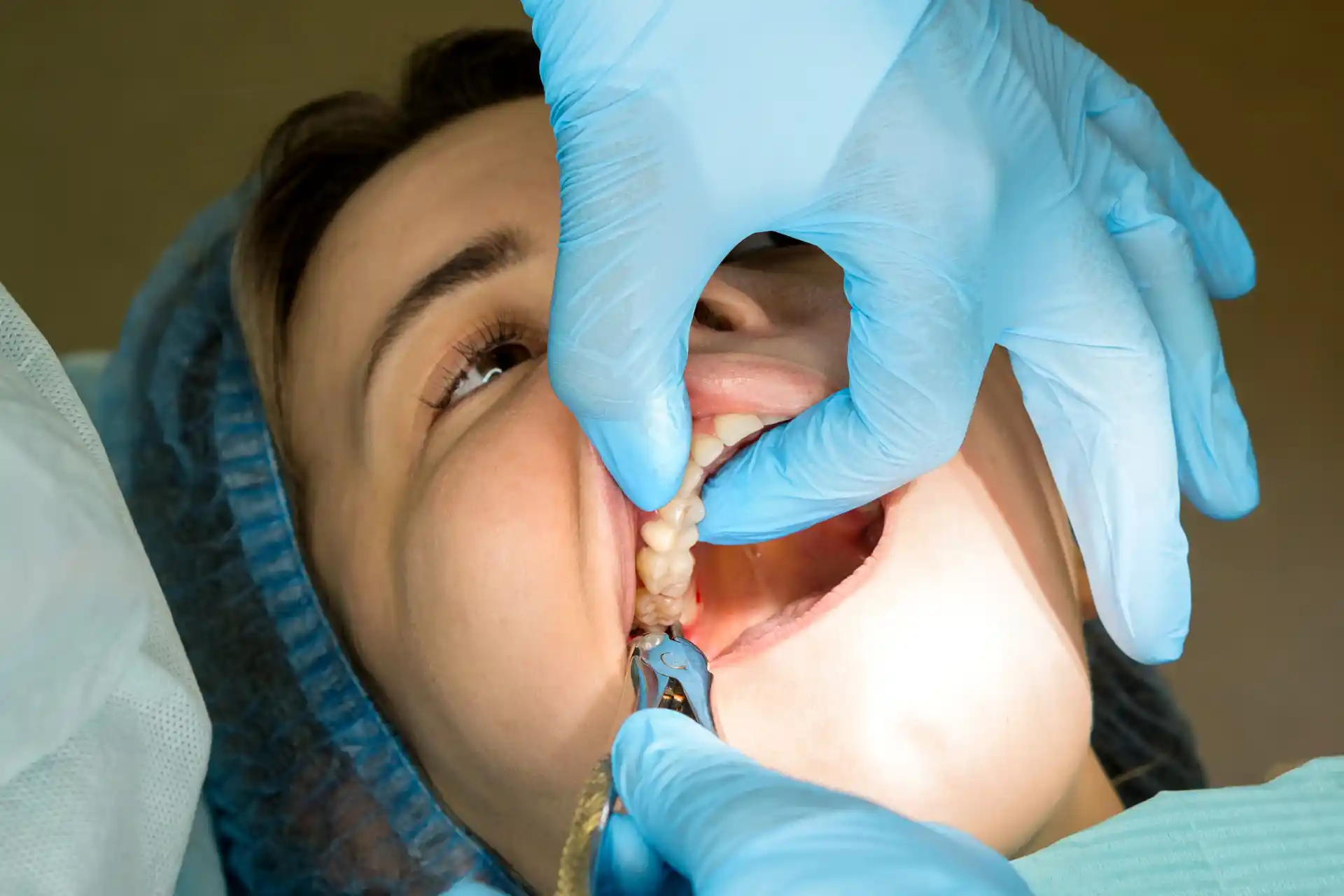Understanding Torn Ankle Ligaments
If you've experienced a torn ankle ligament, it's important to understand the causes and symptoms associated with this type of injury. By gaining a better understanding, you can take appropriate steps towards recovery.
What Causes a Torn Ankle Ligament?
A torn ankle ligament is typically caused by a sudden twisting or rolling motion of the ankle. This can happen during various activities, such as sports, exercise, or even daily tasks. The most common cause of a torn ankle ligament is an ankle sprain, where the ligaments are stretched beyond their normal range of motion. This excessive stretching can lead to partial or complete tearing of the ligament fibers.
Common causes of a torn ankle ligament include:
- Awkward landing after jumping or falling
- Tripping or stumbling on uneven surfaces
- Stepping or twisting the ankle in an unnatural direction
- Participating in high-impact sports without proper warm-up or conditioning
Understanding the causes of a torn ankle ligament can help you identify potential risk factors and take precautions to minimize the chances of injury. If you're interested in learning more about ankle sprains and how to prevent them, check out our article on sprained ankle.
Symptoms of a Torn Ankle Ligament
Recognizing the symptoms of a torn ankle ligament is crucial for proper diagnosis and treatment. If you experience any of the following symptoms after an ankle injury, it's important to seek medical attention:
- Severe pain and tenderness around the ankle joint
- Swelling and bruising around the affected area
- Limited range of motion and difficulty bearing weight on the injured ankle
- A popping or tearing sensation at the time of injury
- Instability or feeling like the ankle gives way
These symptoms may vary depending on the severity of the ligament tear. It's also worth noting that the symptoms of a torn ankle ligament can be similar to other ankle injuries, such as sprained ankle or other ligament tears. Therefore, it's essential to consult a healthcare professional for an accurate diagnosis.
Proper recognition of the symptoms can guide you towards the appropriate treatment and rehabilitation techniques. If you suspect a torn ankle ligament or want to learn more about ligament injuries in general, check out our article on ligament tear.
By understanding the causes and symptoms of a torn ankle ligament, you can better navigate the road to recovery. Remember to consult a healthcare professional for an accurate diagnosis and personalized treatment plan to ensure a safe and effective healing process.
Road to Recovery
Suffering from a torn ankle ligament can be a painful and frustrating experience. However, with the right steps and exercises, you can aid in the healing process and regain strength and stability in your ankle. The road to recovery begins with immediate steps after the injury and continues with rehabilitation exercises for healing.
Immediate Steps After Injury
When you first injure your ankle and suspect a torn ligament, it is essential to take immediate action to minimize further damage and promote healing. Follow these steps:
- Rest: Avoid putting weight on the injured ankle and give it time to heal. Use crutches or a brace, if necessary, to relieve pressure.
- Ice: Apply ice wrapped in a cloth or towel to the injured area for about 20 minutes every 2 to 3 hours. This can help reduce pain, swelling, and inflammation.
- Compression: Use an elastic bandage to wrap the injured ankle, providing support and compression to reduce swelling. Remember not to wrap it too tightly, as it may hinder blood circulation.
- Elevation: Elevate your ankle above heart level to help reduce swelling. Prop your foot up on a pillow or cushion whenever possible.
- Pain Relief: Over-the-counter pain relievers like acetaminophen or ibuprofen can help alleviate pain and reduce inflammation. Follow the dosage instructions and consult a healthcare professional if needed.
- Medical Evaluation: It is important to seek medical attention to assess the severity of the injury and determine the appropriate treatment plan. A healthcare professional can provide a proper diagnosis and guide you through the recovery process.
Rehabilitation Exercises for Healing
Once the initial acute phase has passed, rehabilitation exercises play a crucial role in the healing process. These exercises help restore strength, mobility, and stability to the injured ankle. It is important to perform these exercises under the guidance of a healthcare professional or a qualified physical therapist. Here are some common exercises:
Remember to start with gentle exercises and gradually increase intensity as your ankle heals. It is crucial to listen to your body and avoid any exercises that cause pain or discomfort. If you're unsure about the appropriate exercises for your specific injury, consult a healthcare professional or a physical therapist for guidance.
By following these immediate steps after injury and incorporating rehabilitation exercises into your recovery plan, you can expedite the healing process and regain strength and stability in your ankle. Patience and consistency are key during this road to recovery.
Seek RELIEF®
The RELIEF® procedure is a scientifically-backed approach designed to address the underlying issues of ligament injuries, by specifically targeting damaged fascia surrounding the area of injury and discomfort. The treatment combines ultrasound guidance and hydrodissection techniques to help release fascial adhesions, reduce inflammation, and promote scar tissue healing, in order to help free a potentially compromised ligament and address injury symptoms.1,2,3
To learn how RELIEF® can help manage your ligament injury symptoms, without the need for steroids, medication, surgery, anesthesia, or post-procedure immobilization, contact us today to schedule a consultation.
Preventing Future Injuries
After experiencing a torn ankle ligament, it's important to take steps to prevent future injuries. By focusing on strengthening exercises for ankle stability and ensuring proper footwear and support, you can reduce the risk of re-injury and promote long-term ankle health.
Strengthening Exercises for Ankle Stability
Strengthening the muscles surrounding your ankle is crucial for maintaining stability and preventing future injuries. These exercises target the muscles and tendons that support the ankle joint, helping to improve balance and reduce the risk of ligament tears.
By incorporating these exercises into your regular routine, you can strengthen the muscles and ligaments around your ankle, providing added stability and reducing the likelihood of future injuries. For more information on how to prevent and treat other ligament injuries, check out our article on ligament tear.
Proper Footwear and Support
Wearing appropriate footwear and providing adequate support for your ankles is essential for preventing future ligament injuries. Consider the following factors when choosing footwear and support options:
- Shoe Type: Opt for shoes that provide good ankle support, such as high-top sneakers or boots. Look for designs that stabilize the ankle joint and offer cushioning to absorb impact.
- Arch Support: Choose shoes with proper arch support to maintain proper foot alignment and reduce stress on the ankle ligaments.
- Insoles and Orthotics: Consider using custom insoles or orthotic inserts to provide additional support and stability for your feet and ankles.
- Ankle Braces or Tape: For added support during physical activities, you may choose to wear ankle braces or use tape to stabilize the ankle joint. Consult with a healthcare professional to determine the best option for your specific needs.
Remember to replace worn-out shoes regularly, as worn-out shoes can compromise support and increase the risk of injury. For more information on how to care for and prevent injuries in other areas of the body, visit our articles on sprained knee or sprained thumb.
By incorporating these preventive measures into your lifestyle, you can significantly reduce the risk of future ankle ligament injuries. Remember to listen to your body, start slowly with exercises, and consult with a healthcare professional if you have any concerns or specific conditions that require special attention.
Returning to Normal Activities
After a torn ankle ligament, it's essential to allow your body time to heal and recover fully before returning to your normal activities. Rushing the process can potentially lead to reinjury or complications. In this section, we'll discuss the gradual return to physical activities and the importance of monitoring your progress and seeking professional help.
Gradual Return to Physical Activities
Once your torn ankle ligament has sufficiently healed, you can begin reintroducing physical activities gradually. It's important to start with low-impact exercises that focus on mobility, strength, and balance. This allows your ankle to rebuild strength and stability while minimizing the risk of reinjury.
Consider incorporating exercises such as:
- Ankle range of motion exercises: Perform gentle ankle rotations and flexion/extension movements to improve joint mobility.
- Strengthening exercises: Gradually introduce exercises that target the muscles surrounding the ankle, such as calf raises, ankle dorsiflexion/plantar flexion, and ankle eversion/inversion exercises. Start with low resistance and gradually increase as tolerated.
- Balance exercises: Incorporate balance exercises such as standing on one leg or using a wobble board to improve stability and proprioception.
Remember to listen to your body and progress at a pace that feels comfortable for you. If you experience any pain, swelling, or discomfort during or after exercise, it's essential to reduce the intensity or duration of the activity. Be patient with your body as it adjusts and strengthens.
Monitoring Progress and Seeking Professional Help
Throughout your recovery journey, it's crucial to monitor your progress closely. Keep track of any improvements or setbacks you experience, such as increased strength, reduced pain, or lingering discomfort. This self-monitoring can help you gauge your readiness to progress to more demanding activities.
If you are unsure about your progress or have concerns about returning to certain activities, it's always best to seek professional help. Consulting with a healthcare provider or a physical therapist who specializes in sports injuries can provide valuable guidance and ensure that you are on the right track.
A healthcare professional can assess your ankle's stability, range of motion, and strength, and provide tailored recommendations based on your specific needs and goals. They may suggest additional exercises, provide hands-on treatments, or recommend the use of braces or supports to assist in the recovery process.
Remember, the road to full recovery after a torn ankle ligament is unique to each individual. While some may progress more quickly, others may require additional time and support. Stay patient, follow professional advice, and prioritize your body's well-being as you work towards returning to your normal activities.
To learn how RELIEF® can help manage your ligament injury symptoms and accelerate your injury recovery, contact us today to schedule a consultation.
.jpg)


.webp)


.svg)